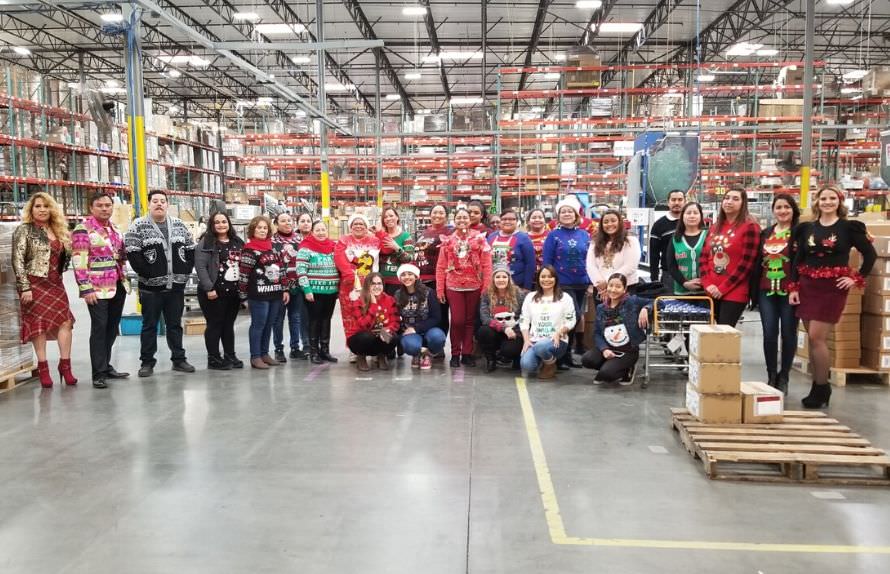
Peak season is the biggest stress test a brand will face all year, a surge of demand, operational pressure, and heightened customer expectations. For growing omnichannel brands, capturing insights during peak can help fuel smarter decisions and stronger performance next year.
Brands that scale successfully measure what matters to make incremental improvements that can scale. During peak season, many operations teams are focused on getting products out on time, but it’s so important to track specific indicators to better measure performance.
Below are the most important metrics to track within a few key operational categories: inventory, returns, customer behavior, budget, and fulfillment, and why they’re the foundation for long-term growth.
What Peak Season Metrics Matter Most?
During peak season all departments have to work together to bring excellence to all customers. There are six major categories brands should track to ensure they’re capturing a complete performance picture:
Each category reveals a different type of opportunity: profitability, customer loyalty, operational resilience, and more.

1. Operational Performance: How Your Systems Can Help You Scale
When volume spikes, weak processes can break quickly. These metrics tell you whether your infrastructure can support growth:
- Order processing time: measures speed to fulfillment; slow means you have an under-resourced operations team.
- Order accuracy rate: errors now lead to returns later, a direct driver of customer satisfaction and repeat purchase rate.
- SLA adherence: track the contracts you have with vendors and carriers; the performance they agree to is yours to track as they may not come to you when they miss the mark.
- System downtime and storefront issues: any outages mean lost revenue and customer trust.
If you see poor performance across these metrics, start stress-testing your systems earlier next year. The data you collect here will help you determine future labor scheduling, adding automation, and partner investments.
2. Inventory Control: Did You Forecast, Distribute, and Allocate Smartly?
Stockouts and backorders are a fatal mistake during peak. Inventory planning should be a big part of your peak season strategy. Any seasonal brand will tell you that quality inventory control may be the biggest marker of success, here’s what to track:
- Sell-through rate: how much of your inventory is gone after the sales will be a key indicator of performance overall.
- GMROI (Gross Margin Return on Inventory): create detailed models to calculate profit productivity of every SKU. It’s a great look into how to manage margins.
- Excess inventory levels: slow moving stock means higher storage fees, cash stuck in inventory, and thinner margins.
- Forecast accuracy: pair your forecasts with your actuals to note the differences and where adjustments should have been made.
3. Returns & Reverse Logistics: A Hidden Goldmine
Returns can tell you everything that your customers won’t say out loud. Make sure you set up quality receiving processes for returns prior to the holiday rush. It can help get usable products back in stock to capture more sales and give you more insights on where issues arise within the supply chain (carriers, fulfillment, or product manufacturing). Metrics to track:
- Return rate by product, category, and sales channel.
- Return reasons (misinformation? defect? damage in transit?).
- Time-to-refund: faster refunds mean happier customers and better loyalty.
- Resale/recovery rate: unlock more value in returned inventory.
4. Customer Behavior and Loyalty: Did You Win Hearts or Just Transactions?
Peak season floods brands with new customers. Tracking the right metrics ensures they become loyal ones:
- Customer acquisition cost (CAC): check if your sales and promotions can net more long-term customers rather than excess spending that doesn’t equal quality leads.
- CLV (Customer Lifetime Value): track which long-term customers or subscribers are buying during the holidays; it might give you higher quality data versus newcomer habits.
- Conversion rate: look at your entire sales funnel to see where shoppers abandon their interest.
- Average order value (AOV) and units per transaction: if you’ve done any bundling, cross-selling, or value-adds like gift messaging, track how well they performed and if your margin saw any boost from these tactics.
5. Budget and Financial Runway: Was Success Actually Profitable?
Revenue is a simple marker of success, but it doesn’t show the whole picture. Here are some metrics to track profitability:
- Gross margin percentage under promotional pressure.
- Fulfillment cost per order: track this overall and against any volume surges to see if fulfillment overtime hurt your bottom line.
- Return on ad spend (ROAS): always check which ads and promotions brought in the most sales, and also the highest AOV.
- Chargeback and refund rates: ensure you’re brand isn’t going to have to pay it all back to disgruntled customers.
6. Fulfillment and Delivery Experience: Your Brand’s Moment of Truth
Customers judge brands by their delivery experience more than anything else. If you work with a fulfillment or logistics provider, you’ll need to audit their performance just as you would if you fulfill in-house. Here’s how to track your fulfillment and shipping performance:
- On-time delivery rate: this is directly tied to NPS and repeat purchases.
- Shipping speed vs. promise accuracy: don’t over-promise, don’t overnight everything and regret the steep invoice later.
- CX tickets and response time: track the “Where Is My Order?” requests and how quickly they were resolved; every customer inquiry requires time and resources from your team—each ticket equals friction.
- Cost-to-serve by channel: DTC vs. marketplace vs. retailer profitability, which performed best?
- Inbound and outbound routes, and timing: looking at overall time and cost of all shipping routes will help your brand streamline cost and observe carbon footprint.
The Top 10 Metrics for Peak Season: Ecommerce Growth Formula
Each brand will have a different shortlist of KPIs that matter most to them. A premium electronics brand will need to track differently than a CPG wellness brand.
Here are some of the high-impact metrics that will help give you the clearest predictions of how successful your holiday season is. These metrics reduce blind spots and inform smarter planning for next peak.
- On-time delivery rate
- Total order accuracy
- Return rate and return reasons
- CAC vs. CLV Ratio
- Conversion Rate added to AOV
- Marketing ROAS
- Fulfillment Cost per Order
To truly unlock peak-season growth, brands must track performance, identify friction points, and make the right adjustments in real time. Working with strong operational partners can make all the difference. Smooth collaboration leads to smarter inventory buys, smoother and more resilient fulfillment networks, and significantly less operational chaos when volumes surge.
By choosing partners who understand peak pressures, brands set themselves up not just to survive the season, but to scale from it.

This post was written by Maureen Walsh, Marketing Director at DCL Logistics. A writer and blogging specialist for 20 years, she helps create quality resources for ecommerce brands looking to optimize their business.
Tags: KPIs & Metrics, Omnichannel Fulfillment









